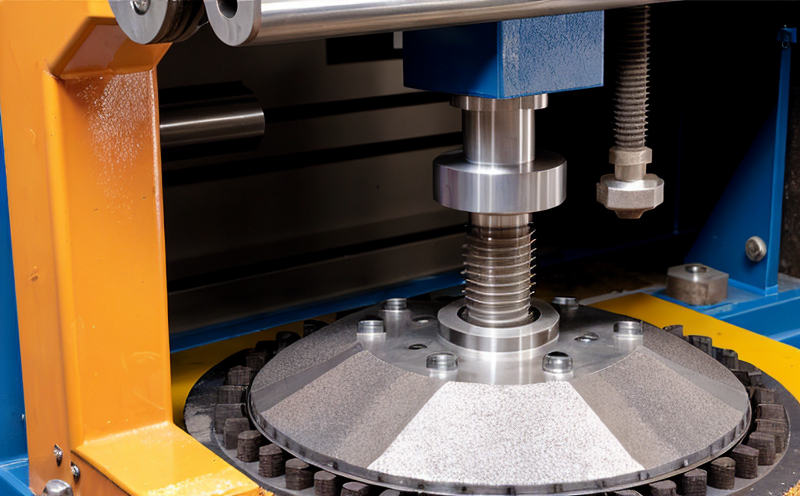ISO 10816-1 Evaluation of Machine Vibration Severity
The ISO 10816 series of standards is widely recognized as a global benchmark for the evaluation and monitoring of machine vibration. This standard provides guidelines for assessing the severity levels of mechanical vibrations in rotating machinery, which are critical indicators of equipment health and operational reliability.
ISO 10816-1 specifically focuses on the evaluation of machine vibration using frequency spectrum analysis. It establishes a framework for categorizing different types of machines based on their vibration characteristics, allowing for consistent measurement and interpretation across various industries. This standard is particularly useful for early detection of potential faults that could lead to costly downtime or catastrophic failures.
The methodology described in ISO 10816-1 involves the use of vibration sensors placed at strategic locations around the machine's foundation, shafts, or other relevant components. These sensors convert mechanical vibrations into electrical signals, which are then processed and analyzed by specialized software to determine the severity level according to predefined criteria.
One key aspect of this testing is the use of a vibration severity curve (VSC), which plots the acceleration values against frequency ranges. The VSC helps in visualizing how different frequencies contribute to overall vibration levels, providing insights into specific issues such as bearing wear or misalignment.
The test procedure outlined in ISO 10816-1 is designed to be comprehensive yet practical for industrial environments where continuous operation is often essential. By adhering to this standard, manufacturers and operators can ensure that their machinery meets stringent quality control requirements while maintaining high levels of operational efficiency and safety.
For rotating machines such as fans, pumps, compressors, and turbines, regular vibration testing according to ISO 10816-1 is crucial for predictive maintenance strategies. Early identification of abnormal vibration patterns allows for timely interventions, preventing minor issues from escalating into major failures that disrupt production schedules.
In summary, compliance with ISO 10816-1 ensures not only adherence to international quality standards but also enhances the reliability and longevity of HVAC equipment through proactive monitoring and maintenance practices. This standard plays a vital role in safeguarding critical infrastructure against potential risks associated with machinery failures.
Why It Matters
The importance of vibration testing cannot be overstated, especially within the HVAC sector where continuous operation is paramount. Properly conducted vibration tests like those specified in ISO 10816-1 help identify subtle changes in machine performance that might otherwise go unnoticed until it's too late.
By leveraging this standard, organizations can implement effective preventive maintenance programs tailored to their specific needs. Such proactive measures contribute significantly to reducing unscheduled downtime, extending equipment lifespan, and minimizing operational costs associated with repairs or replacements.
The reliability of HVAC systems is directly linked to the accuracy and consistency of vibration testing procedures. Consistent application of ISO 10816-1 ensures that all involved parties are working towards common goals, promoting better communication between design engineers, production managers, and maintenance personnel.
Moreover, compliance with international standards like ISO 10816-1 fosters trust among stakeholders by demonstrating a commitment to excellence. It also facilitates smoother interactions with regulatory bodies responsible for overseeing industrial safety protocols worldwide.
Why Choose This Test
- Comprehensive evaluation of machine vibration using advanced frequency spectrum analysis techniques.
- Identification and categorization of various types of machines based on their vibration characteristics, ensuring consistency across different applications.
- Early detection of potential faults that could lead to costly downtime or catastrophic failures.
- Prediction and avoidance of machinery-related risks through regular monitoring and maintenance practices.
- Enhanced reliability and longevity of HVAC equipment through proactive management strategies.
- Maintenance of high operational efficiency and safety standards in critical infrastructure operations.
- Fostering trust among stakeholders by adhering to internationally recognized quality control benchmarks.
- Simplification of regulatory compliance processes, facilitating smoother interactions with relevant authorities.
Use Cases and Application Examples
The ISO 10816-1 vibration testing protocol is applicable across a wide range of industries where rotating machinery plays a crucial role. In the HVAC sector, this standard finds extensive use in evaluating the performance of fans, pumps, compressors, and turbines.
For instance, during the design phase of an HVAC system, engineers can utilize ISO 10816-1 to ensure that all components meet specified vibration limits. This helps in identifying any potential weaknesses early on, allowing for necessary adjustments before production begins.
In the operational stage, regular vibration monitoring using this standard allows operators to track changes over time. Any deviations from expected patterns can prompt further investigation into underlying causes, enabling timely corrective actions.
Additionally, ISO 10816-1 plays a key role in assessing the effectiveness of maintenance interventions undertaken throughout the equipment lifecycle. By comparing pre-maintenance and post-maintenance vibration readings, technicians gain valuable insights into the impact of their efforts on overall machine health.
The standard also supports compliance with relevant national and international regulations governing industrial safety practices. This ensures that all activities related to HVAC machinery are conducted in a manner consistent with best industry standards.





